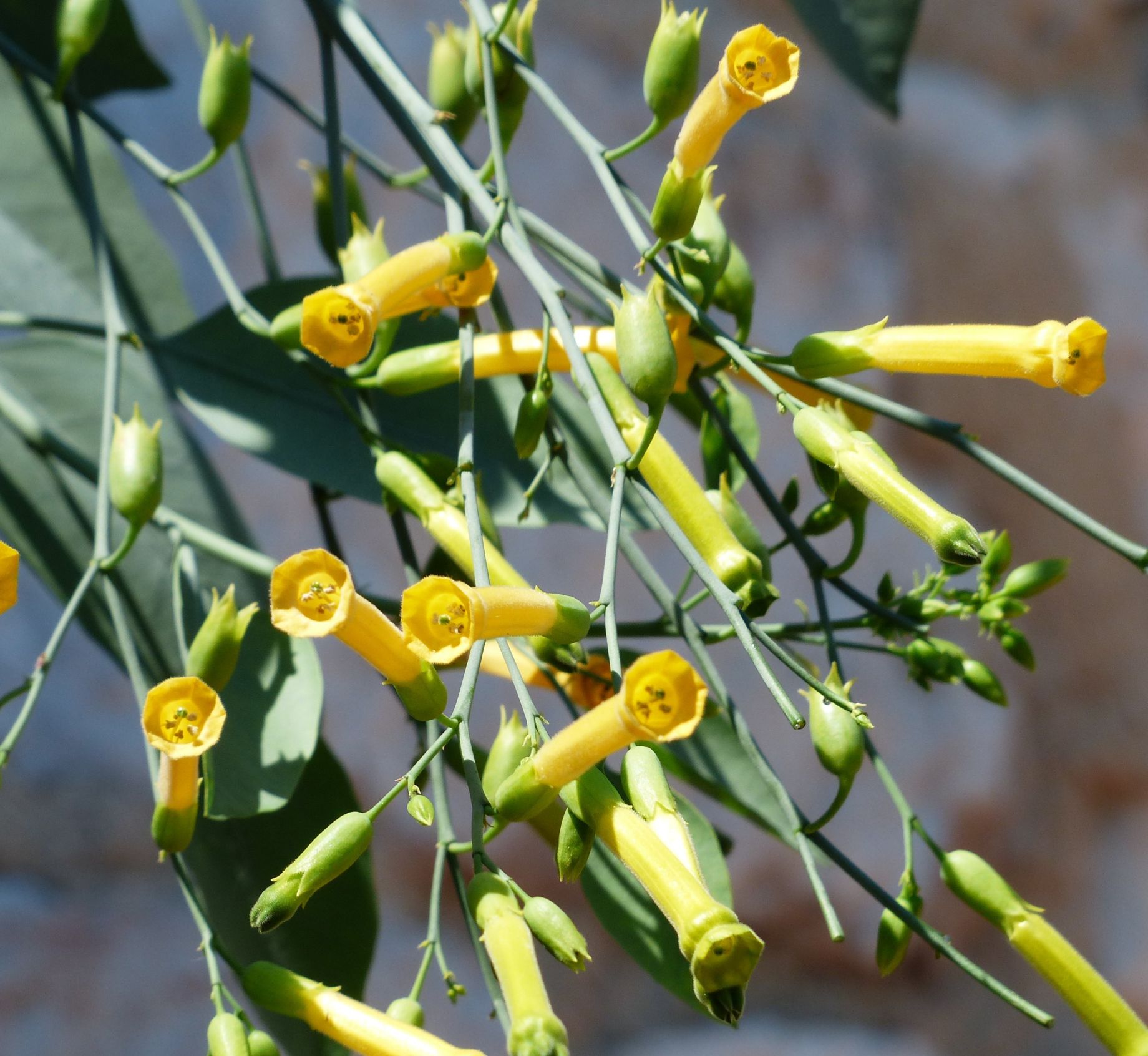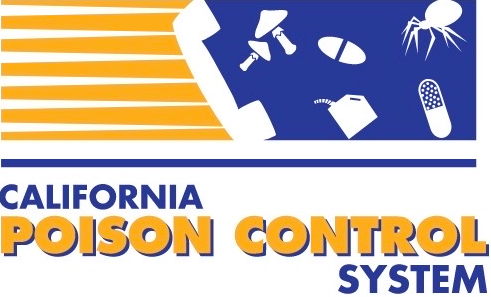Watch the Close Calls with CPCS video episode on Toxic Plants (above).
What to do for a plant or mushroom poisoning
- Call the Poison Hotline at 1-800-222-1222—even if you are not sure, it will not be a waste of time
- Check for any irritation of the skin, mouth, or tongue
- Do NOT induce vomiting
- Do not wait for symptoms to appear—treatment will be more difficult once symptoms have developed
- If you are advised to go to the hospital, take the plant or part of the plant with you
- Keep any pieces of the plant for identification
- Remove any plant or mushroom parts from the mouth or hands
- Wash around the mouth and hands and give a few sips of water
When you call the Poison Hotline about a plant or mushroom poisoning, it is best to have a name of the plant involved. You can have either the common name or the Latin name. Poison Hotline staff cannot identify plants and mushrooms over the phone from a description of the plant.
About plant & mushroom poisoning
Plants and mushrooms are poisonous if they cause some type of negative reaction from exposure. Reactions to plants can depend on factors, like a person's:
- Age
- Health factors, such as allergies
- The amount of exposure from a plant
- Weight and height
Plants are a major cause of poisoning in children under the age of 6 years. But children are not the only victims of plant poisoning—adults, pets, and farm animals can also get exposed to plants.
For plant poisoning related to animals, call the ASPCA Animal Poison Control Center: 888-426-4435
Symptoms of plant poisoning
Symptoms can range from mild to serious, depending on the amount of exposure.
- Each situation is unique
- Some plants cause only a red, itchy rash
- Some plants can be very dangerous and have effects on the heart, liver, or kidneys
- Some plants cause vomiting and diarrhea
Symptoms of mushroom poisoning
Symptoms can range from mild to serious, depending on the amount of exposure. Learn more about Wild Mushrooms.
- Abdominal pain
- Cramping
- Diarrhea
- Death due to eating wild mushrooms is uncommon, but does occur
- Liver damage
- Vomiting
Prevent plant & mushroom poisoning
To prevent accidents, be aware of the potential dangers of plants and mushrooms.
- Have the common and Latin names of plants available
- Know the types of plants that are in your home, work, or school environment
- Teach children to stay away from potentially toxic or poisonous plants
The only safe mushrooms are those purchased at established food markets.
- Do not eat wild mushrooms that were picked by friends or family members
- Buy cultivated mushrooms at a reputable food market
If you do not know the name of a plant, take the plant or a part of the plant with leaves, berries or flowers to a reputable plant nursery to identify them. Try to get both the common name and the Latin scientific name for a plant species. The common names of plants can refer to several different species. Some may be safe, and some may be dangerous. It is important to know which species you have in your home, work, or school environment by knowing the Latin name.
Keep the name tags that come with new plants or attach the name of a plant on its container, for future identification. If your child is being cared for at a relative’s house or daycare, it is important to know if they have dangerous plants to which your child could be exposed.
Call the Poison Hotline for questions about potentially toxic or poisonous plants and mushrooms.
Common plant & mushroom exposures
Below is a guide to the most common plants and mushrooms that the California Poison Control System (CPCS) receives calls about on an annual basis. It should not be used as a substitute for calling the Poison Hotline if a person has been exposed to or is experiencing symptoms from a plant or mushroom exposure.
Angel’s Trumpet, Brugmansia spp.
This large semi-tropical plant can be found growing throughout California. It is best known for its large trumpet-shaped flowers which come in shades of white, yellow, pink, orange or red. Some also have a delicate, inviting scent.
Symptoms & first aid: All parts of this plant are toxic and could cause serious poisoning if chewed or eaten. If you think someone may have been exposed to Angel's Trumpet, call the Poison Hotline right away to help guide you to proper medical care.
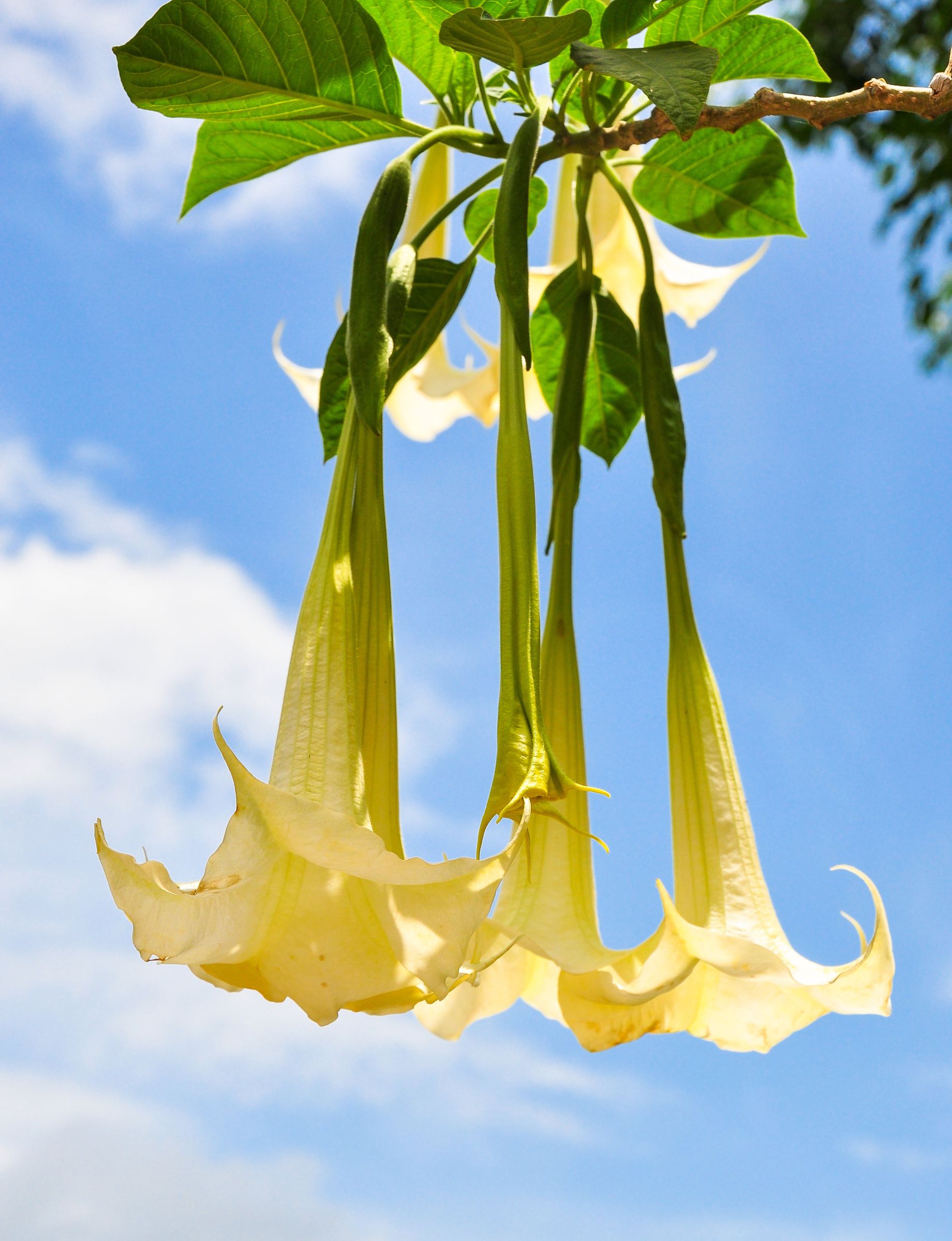
Death Cap, Amanita phalloides
The Death Cap is the deadliest of all mushrooms. This mushroom has a greenish-gray cap, white gills, and a large white sac at the bottom of its stem. Death Caps grow throughout California during the rainy months, from fall to early winter.
Symptoms & first aid: Mushrooms poison thousands of people yearly. Never pick or eat wild mushrooms. If a person eats a wild mushroom, they may not feel or look sick for many hours. However, immediate medical attention is necessary. Call the Poison Hotline right away to help guide you to proper medical care. Be prepared to take both the person and the mushroom to the hospital. Identification of the mushroom is helpful for treatment.

Dumbcane, Dieffenbachia spp.
With beautiful leaves containing light and dark colors, these plants are commonly used to decorate homes, apartments and businesses. These plants are poisonous.
Symptoms & first aid: Biting or chewing on the stems or leaves may cause burning of the lips and tongue as well as swelling. Severe swelling in the tongue and throat can be a life-threatening emergency. Call the Poison Hotline to help guide you to proper medical care.
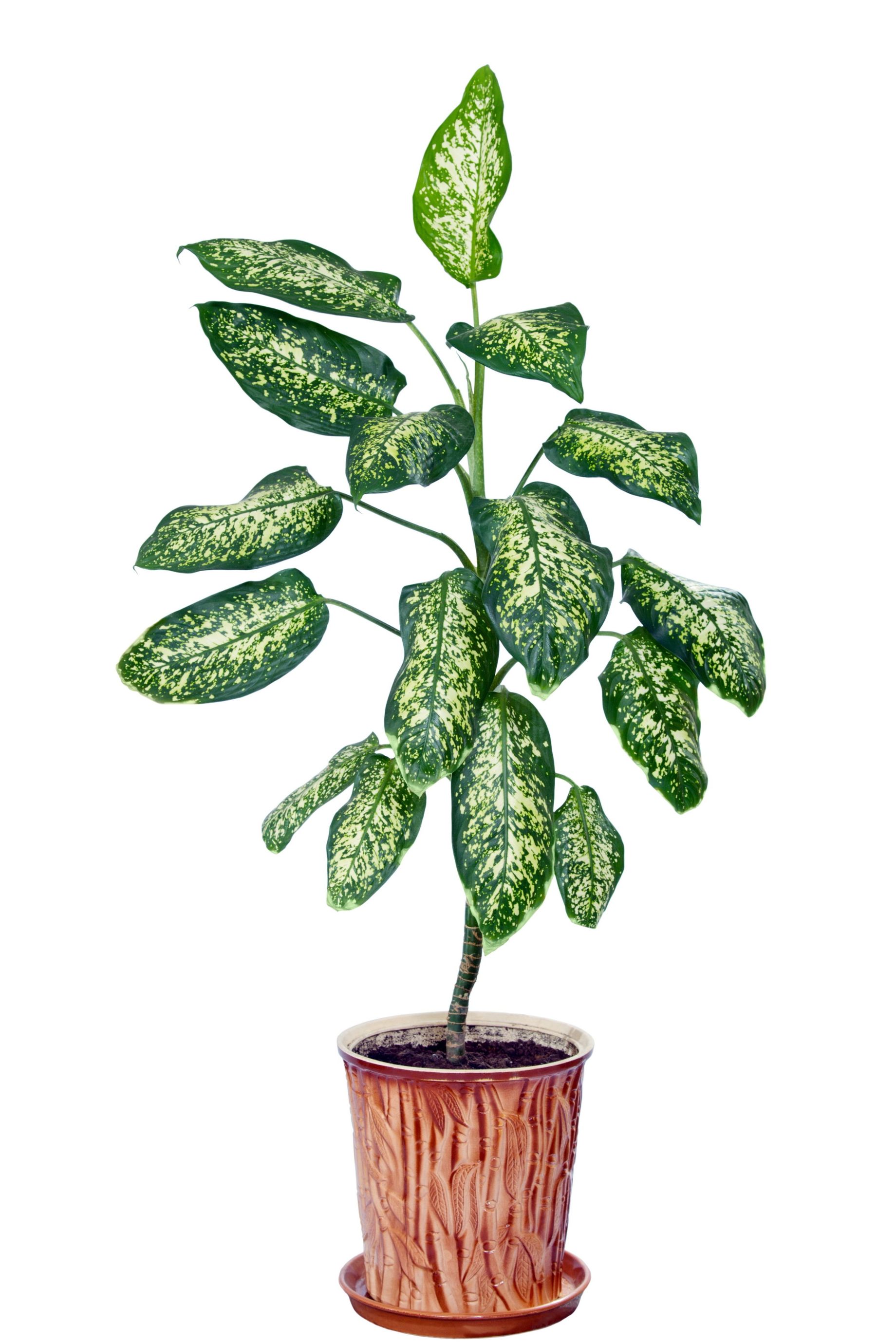
Oleander, Nerium oleander
Oleander is a shrub or small tree cultivated worldwide in temperate and subtropical areas as an ornamental and landscaping plant. It has star-shaped flowers that bloom nearly year-round. This evergreen shrub is commonly seen along highway medians and in public landscapes throughout California.
Symptoms & first aid: Although common throughout California, oleander is a potent heart toxin, and it can lead to serious illness and possibly death. Oleander leaves or branches may also cause a skin rash or irritation. Wash the affected area of skin with soap and water as soon as possible after contact.
Call the Poison Hotline to help guide you to proper medical care. The rashes may be very serious and painful. Vomiting and fainting are signs of serious toxicity from ingesting this very dangerous plant
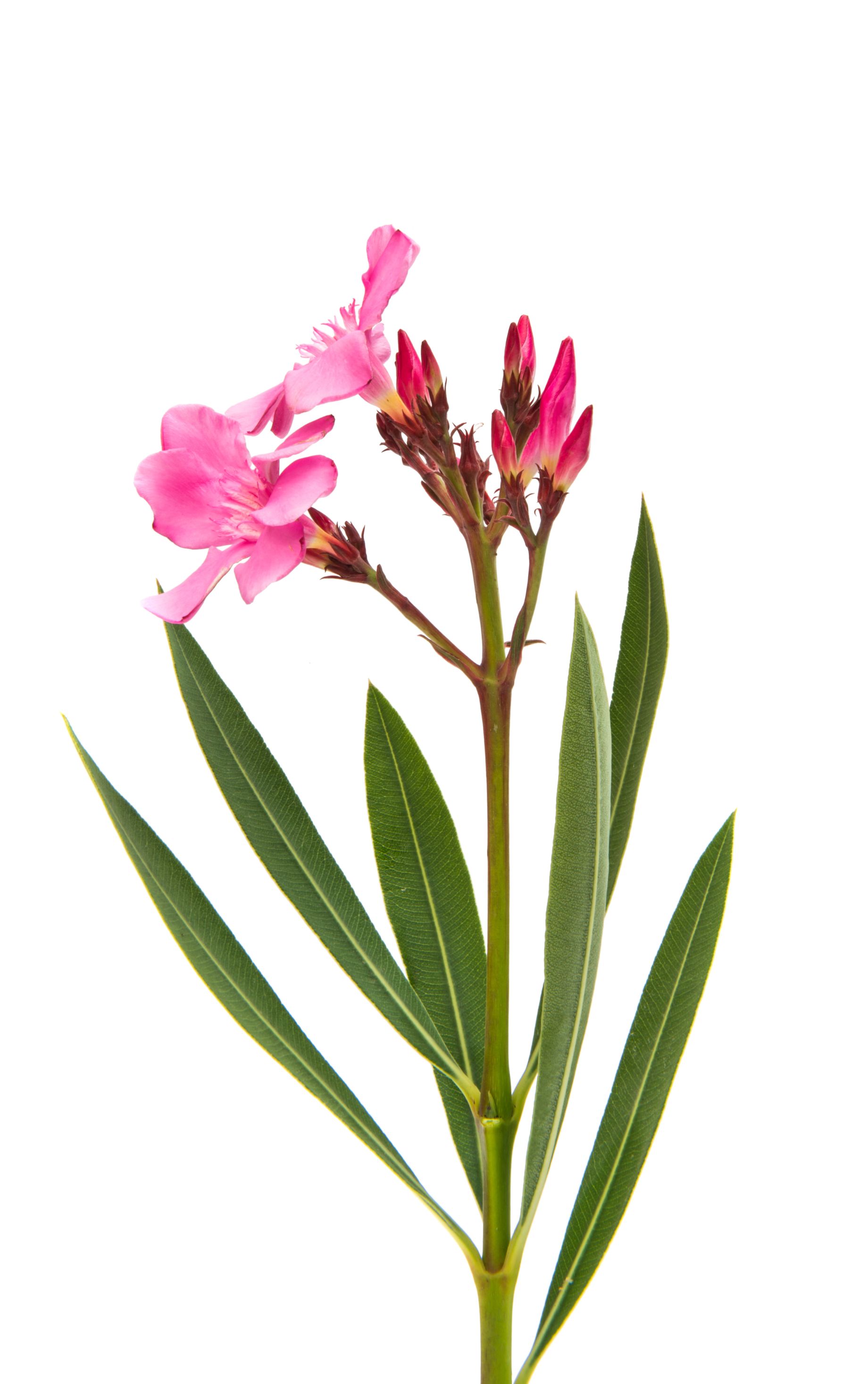
Poison Hemlock, Conium maculatum
Poison hemlock can be found growing throughout California. This plant is part of the carrot family (Apiaceae) and can have several look-a-likes. It has a two-year life cycle and can be identified in the first year with dark-green leaves, mostly triangular, lacy, and deeply divided. In the spring of its second year, poison hemlock develops branching and grows a tall flowering stalk up to 8 to 10 feet in height. A telltale characteristic of the plant is the purple blotches or spots on the stem.
Symptoms & first aid: All parts of the poison hemlock—leaves, flowers, seeds, stems, and roots—are highly toxic to humans and animals. Ingestion of hemlock can be very serious and even fatal. If you think someone may have come in contact with Poison Hemlock, call the Poison Hotline to help guide you to proper medical care.

Poison Oak, Toxicodendron diversiloba
Poison oak is abundant in California, found along California’s coasts, forests, grassy hillsides, and recreation areas. This plant typically has three leaflets but may have up to five. You can spot the plant all year long, though it changes color from green to crimson red in the fall. Leaves are shiny on the top and dull on the underside.
Symptoms & first aid: All parts of this plant are poisonous and contain irritating oils. The oil from Poison Oak can cause an itchy rash, which then turns into water blisters. If you come into contact with poison oak, wash your skin with soap and cold water immediately. Remove and wash clothing to prevent further contact. Developing a Poison Oak rash after exposure is unpleasant for many people. Not to mention, repeated exposure increases sensitivity over time.
Seek medical attention if:
- The rash covers much of your body.
- You have many blisters or swelling–especially on your eyelids, face, or genitals.
- You have trouble breathing or swallowing.
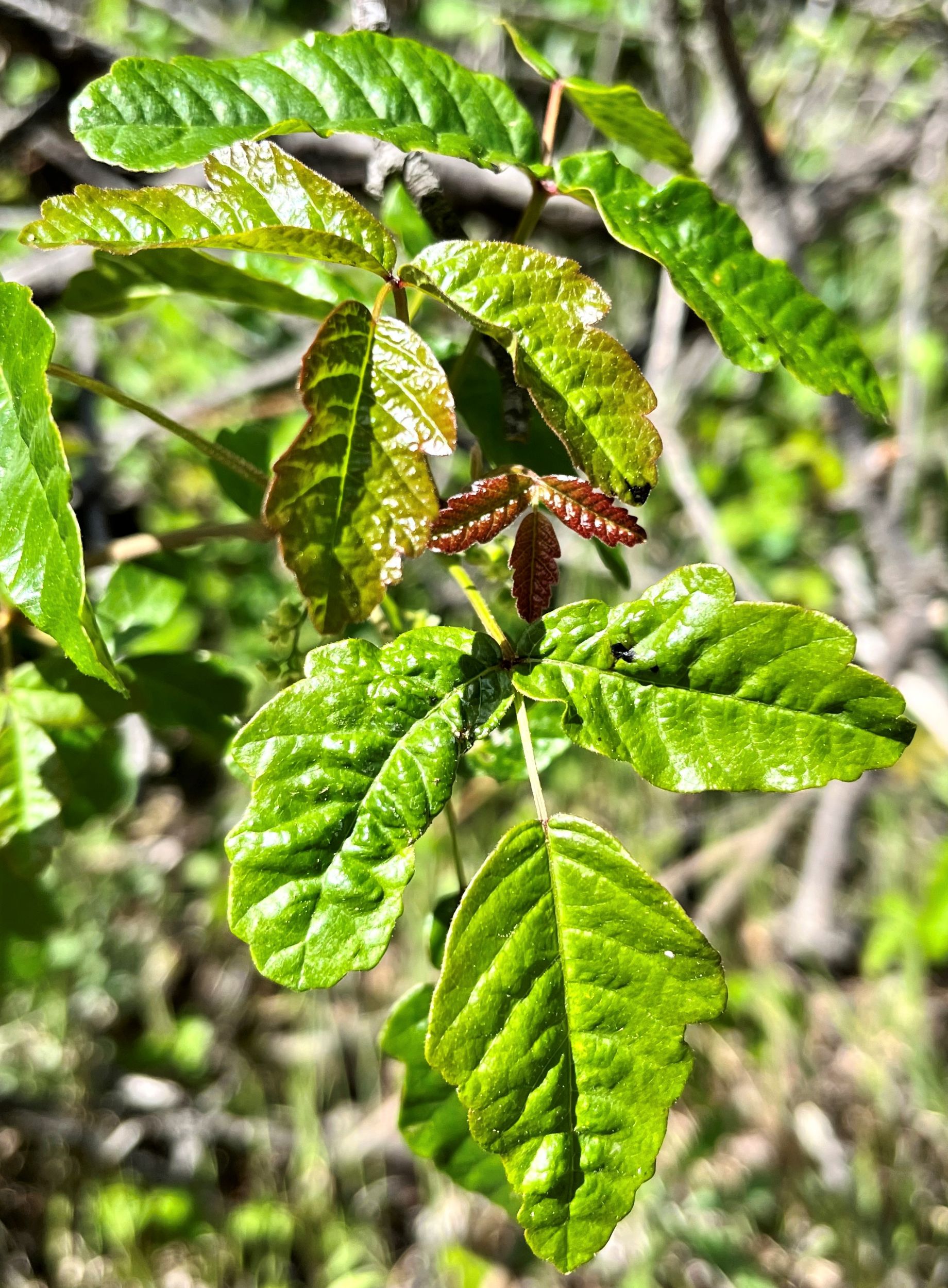
Stinging Nettle, Urtica dioica
Stinging nettle is a plant with pointed leaves and white to yellowish flowers. The plant is common in herbal medicine, and young leaves can be cooked and eaten. Additionally, stinging nettle has been used as a source for textiles and is sometimes used in cosmetics.
Symptoms & first aid: When consumed, Stinging Nettle might cause diarrhea, constipation, and upset stomach in some people. Touching the stinging nettle plant can cause skin irritation. If someone is experiencing side effects from exposure to Stinging Nettle, call the Poison Hotline right away to help guide you to proper medical care.

Tobacco, Nicotiana spp.
There are many species of Nicotiana, the tobacco plant. Indian tobacco is a species native to California. It produces clusters of trumpet-shaped white flowers. It grows in foothills, valleys, flood plains, and agricultural areas of the state. Some species of tobacco plants are farmed for leaves used to make cigarettes and cigars. Others are used as ornamental garden plants.
Symptoms & first aid: If swallowed, all species of this plant can cause nicotine poisoning. Nicotine poisoning can lead to immediate and severe effects on the heart, lungs, and intestines. If you think someone may have swallowed a tobacco plant, call the Poison Hotline right away to help guide you to proper medical care.
